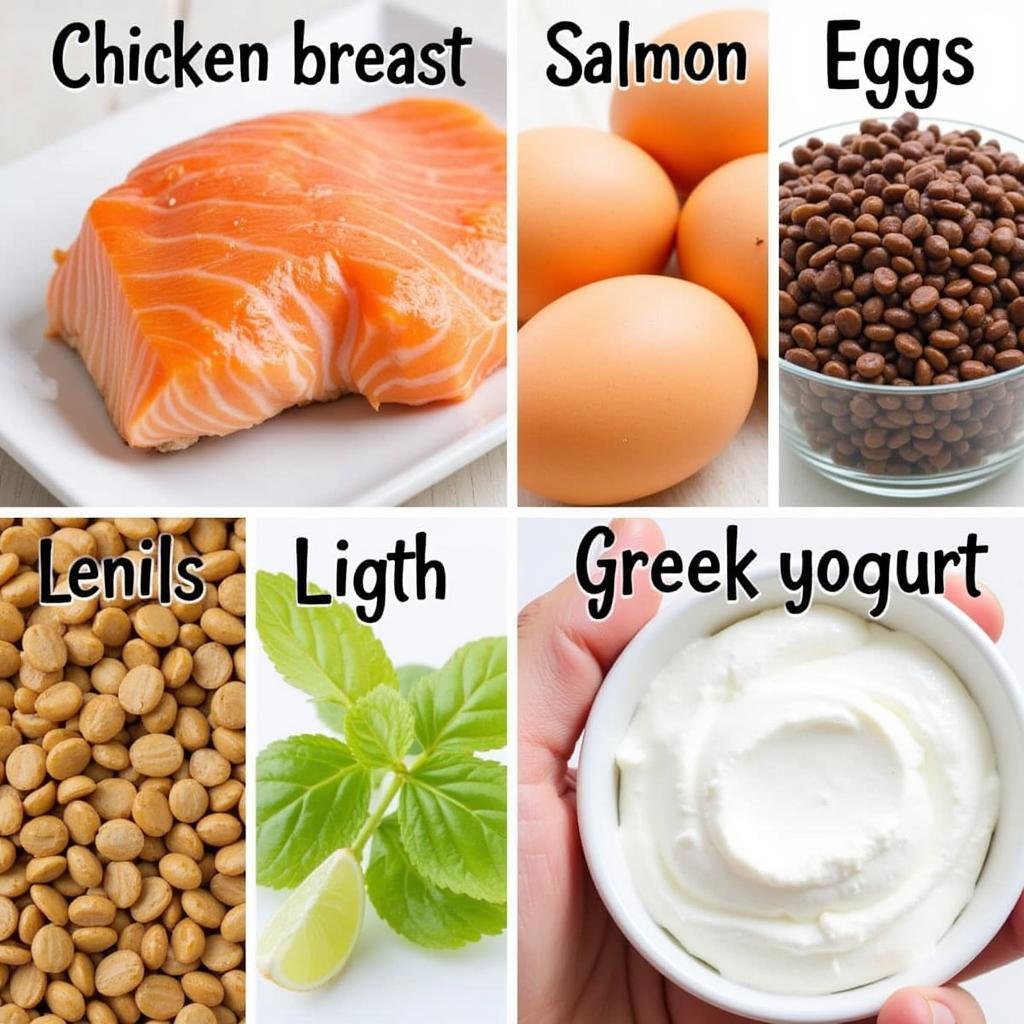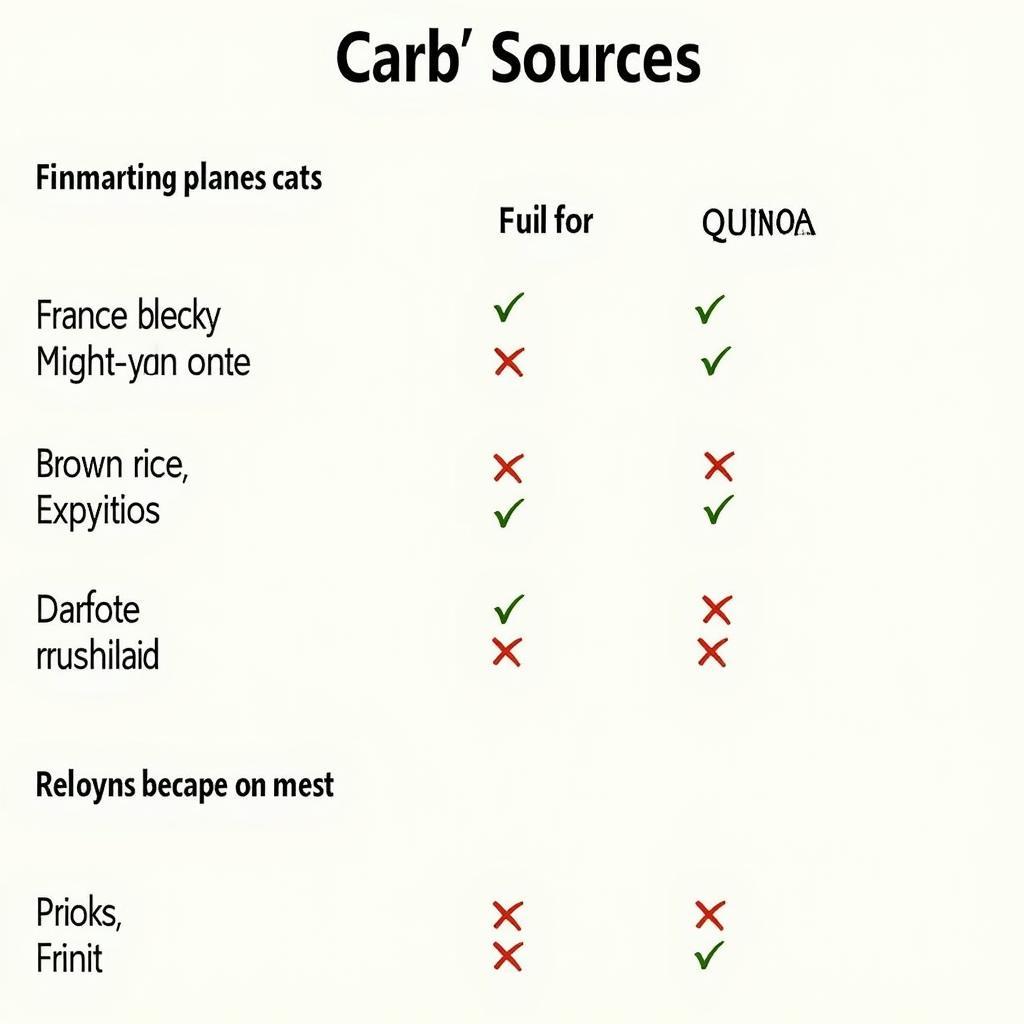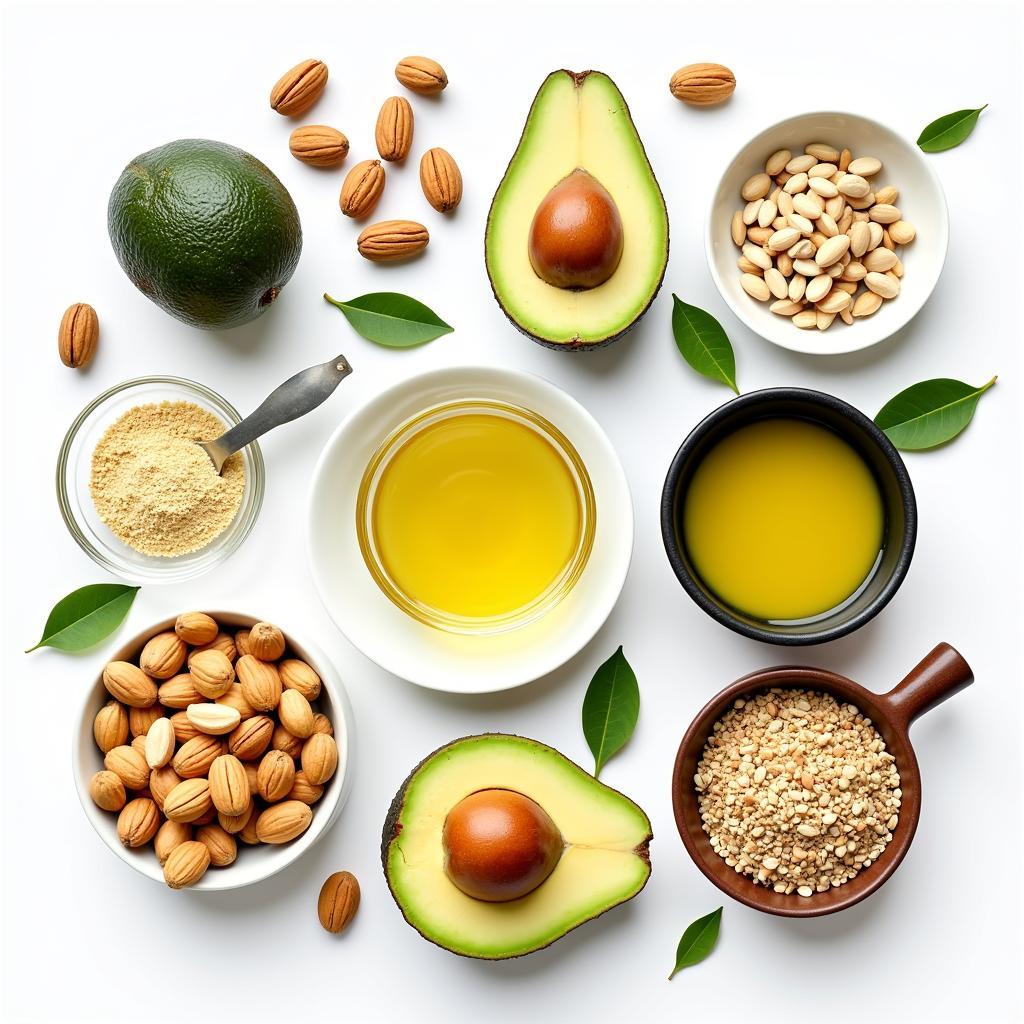Building a strong and sculpted backside requires a combination of effective workouts and proper nutrition. While squats, lunges, and hip thrusts target those glute muscles, the foods you consume play a crucial role in muscle growth and recovery. In this comprehensive guide, we’ll explore the Best Foods For Glute Growth, providing you with the knowledge to optimize your diet and maximize your gains.
The Power of Protein: Building Blocks for Glute Growth
Protein is essential for building and repairing muscle tissue, making it a cornerstone of any glute-building diet. When you engage in resistance training, you create tiny tears in your muscle fibers. Protein provides the amino acids needed to repair this damage, resulting in stronger and larger muscles.
 Protein-rich foods for glute growth
Protein-rich foods for glute growth
Here are some of the best protein sources to incorporate into your diet:
- Lean meats: Chicken, turkey, and lean cuts of beef are excellent sources of high-quality protein.
- Fish: Salmon, tuna, and other fatty fish are rich in protein and omega-3 fatty acids, which promote muscle recovery and reduce inflammation.
- Eggs: Whole eggs are a complete protein source, meaning they contain all nine essential amino acids.
- Dairy products: Greek yogurt, cottage cheese, and milk provide a good balance of protein and carbohydrates.
- Legumes: Lentils, beans, and chickpeas are plant-based protein sources that are also rich in fiber and micronutrients.
Carbs Aren’t the Enemy: Fueling Your Workouts for Glute Growth
While low-carb diets have gained popularity, carbohydrates are essential for providing your body with energy to power through those intense glute workouts. When you consume carbohydrates, your body breaks them down into glucose, which is stored in your muscles as glycogen. This stored energy is then used to fuel your workouts, preventing muscle breakdown and promoting growth.
 Carbohydrate sources for optimal glute growth
Carbohydrate sources for optimal glute growth
Choose complex carbohydrates over simple sugars, which can lead to energy crashes. Here are some excellent options:
- Brown rice: A versatile grain that can be served as a side dish or used in salads and bowls.
- Quinoa: A complete protein source that is also rich in fiber and iron.
- Sweet potatoes: A good source of carbohydrates, fiber, and vitamin A.
- Oats: A breakfast staple that provides sustained energy throughout the morning.
- Fruits: Berries, bananas, and apples provide carbohydrates, antioxidants, and essential vitamins.
Healthy Fats: Supporting Hormone Production and Overall Health
Don’t fear fat! Healthy fats are essential for hormone production, including testosterone, which plays a vital role in muscle growth. They also support cell function, nutrient absorption, and overall health.
 Incorporating healthy fats to boost glute development
Incorporating healthy fats to boost glute development
Include these healthy fat sources in your diet:
- Avocados: A great source of monounsaturated fats, fiber, and potassium.
- Nuts and seeds: Almonds, walnuts, chia seeds, and flaxseeds provide healthy fats, protein, and fiber.
- Olive oil: A heart-healthy oil that is rich in monounsaturated fats.
- Fatty fish: As mentioned earlier, salmon, tuna, and other fatty fish are excellent sources of omega-3 fatty acids.
Sample Glute-Building Meal Plan
Here’s a sample meal plan that incorporates the best foods for glute growth:
Breakfast: Oatmeal with berries and a scoop of protein powder.
Lunch: Grilled chicken salad with mixed greens, quinoa, and a drizzle of olive oil.
Snack: Greek yogurt with almonds and a piece of fruit.
Dinner: Baked salmon with sweet potato and steamed vegetables.
Pro Tip from Lisa Davis, Certified Nutritionist: “Remember to adjust portion sizes based on your individual caloric needs and activity levels. If you’re unsure about creating a personalized meal plan, consult with a registered dietitian or certified nutritionist.”
Beyond Diet: Other Factors Influencing Glute Growth
While diet plays a crucial role in building a bigger booty, other factors also contribute to muscle growth:
- Consistent Resistance Training: Engaging in regular strength training exercises that target your glutes is essential for muscle stimulation and growth.
- Progressive Overload: Gradually increasing the weight, reps, or intensity of your workouts over time challenges your muscles and promotes growth.
- Adequate Rest and Recovery: Muscles grow during rest, not during workouts. Ensure you’re getting enough sleep and allowing your body time to recover between training sessions.
Conclusion
Building a strong and sculpted backside requires a multi-faceted approach that includes proper nutrition, consistent exercise, and adequate rest. By incorporating the best foods for glute growth into your diet, you’ll provide your body with the nutrients it needs to fuel workouts, repair muscle tissue, and maximize your gains. Remember to listen to your body, be patient, and enjoy the journey to a stronger, more confident you.
FAQs about Foods for Glute Growth
Q: Can I build glutes with diet alone?
A: While diet is crucial for providing building blocks, exercise is necessary to stimulate muscle growth.
Q: How much protein do I need for glute growth?
A: Aim for 1.2-2 grams of protein per kilogram of body weight daily.
Q: Are supplements necessary for glute growth?
A: A balanced diet usually suffices, but creatine and protein powder can be beneficial.
Q: How long does it take to see results?
A: Consistency is key. Noticeable changes might take a few weeks to a couple of months.
Q: Can I still grow my glutes if I’m vegetarian or vegan?
A: Absolutely! Many plant-based protein sources are available, like tofu, tempeh, and legumes. You can find a great quinoa dog food recipe on our website if that’s something that interests you.
Need help choosing the best food for mini schnauzer? Or maybe you’re interested in finding the best freeze dried survival food? We’ve got you covered!
For further assistance, contact our dedicated customer support team at 02437655121, email us at minacones@gmail.com, or visit our address at 3PGH+8R9, ĐT70A, thôn Trung, Bắc Từ Liêm, Hà Nội, Việt Nam. We are here to support you 24/7.